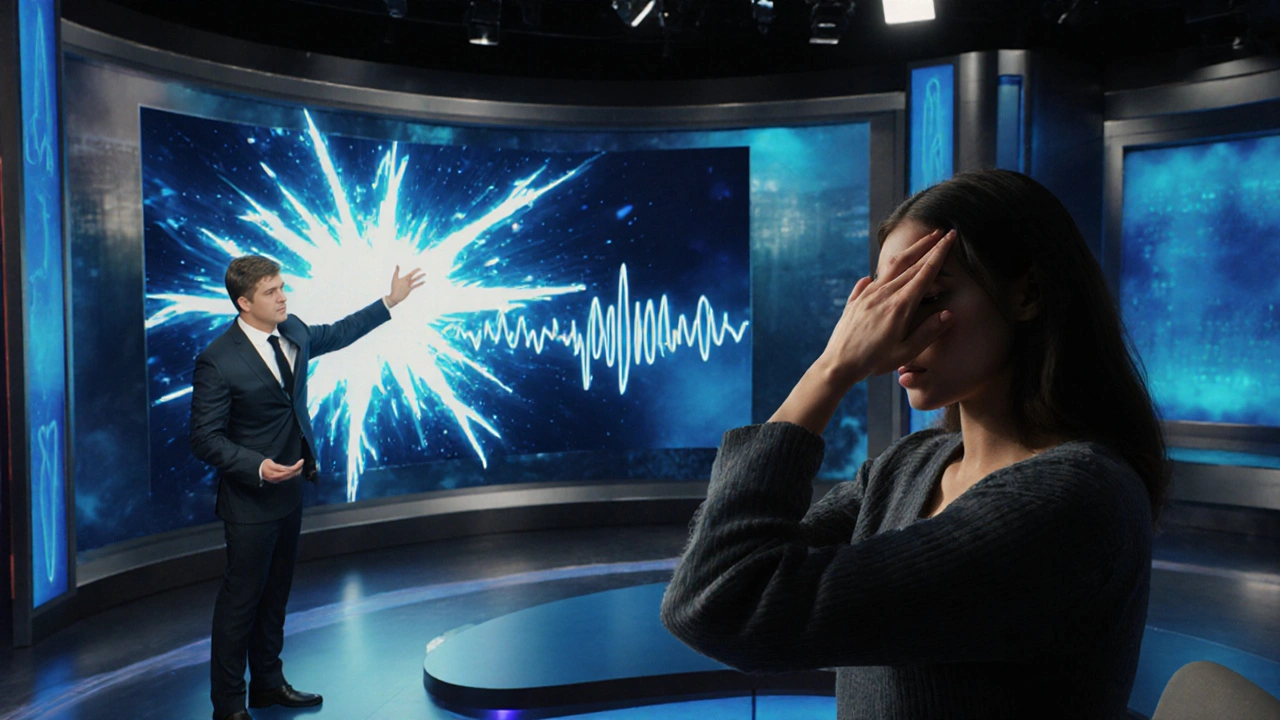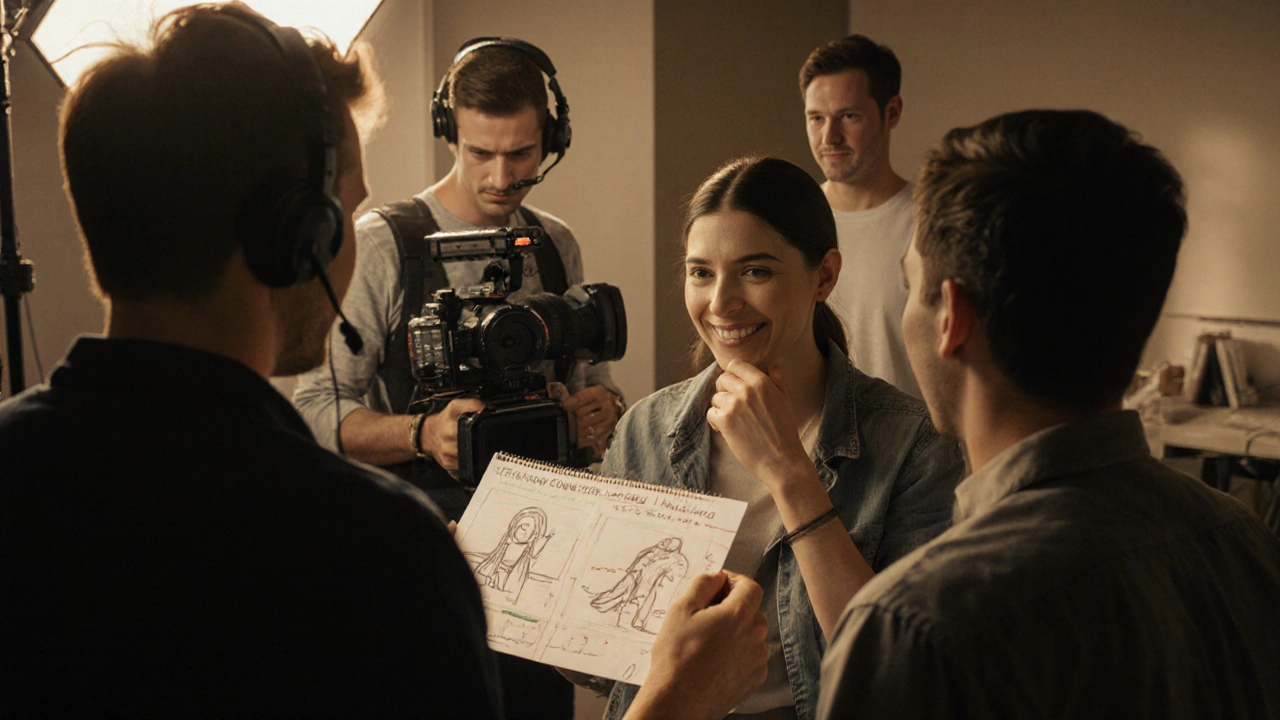Myoclonic Seizures and Media: How Stereotypes Skew the Picture

When Myoclonic seizures are brief, shock‑like muscular jerks caused by sudden electrical discharges in the brain appear on screen, they’re often turned into a plot device rather than a medical reality. This article pulls back the curtain on those portrayals, shows why they’re misleading, and offers practical tips for anyone creating content that touches on seizure disorders.
TL;DR
- Myoclonic seizures are rapid muscle jerks, not always dramatic"shocks".
- Media usually shows seizures as scary, uncontrolled, or comedic.
- These stereotypes fuel stigma and hurt patients.
- Accurate depictions need medical input, realistic timing, and context.
- Creators can follow a simple checklist to avoid common pitfalls.
What are Myoclonic Seizures?
In clinical terms, myoclonic seizures are sudden, brief jerks of a muscle or group of muscles that snap the body like a tiny electric shock. They differ from the classic tonic‑clonic seizure that involves full‑body convulsions. Myoclonic events can last a fraction of a second, happen multiple times a day, and often occur without loss of consciousness. For many living with epilepsy, they’re a manageable symptom rather than a life‑threatening episode.
How the Media Has Portrayed Seizures Over the Years
From early 20th‑century silent films to today’s binge‑worthy dramas, seizures have been used as shorthand for danger, madness, or comic relief. In a popular crime series from the 1990s, a character’s "fit" is timed perfectly to a dramatic reveal, implying that seizures are rare, unpredictable, and always spectacular. News clips often replay a single, dramatic seizure without explaining the underlying condition, reinforcing the idea that every seizure is a medical emergency.
A quick scan of recent TV shows shows three recurring tropes:
- The “shock” moment - the seizure is shown as a sudden, loud convulsion that halts the scene.
- Loss of agency - characters become helpless, reinforcing the stereotype that people with epilepsy can’t lead normal lives.
- Comedy cue - a minor seizure is used to generate laughter, trivializing real suffering.
Common Stereotypes and Why They Miss the Mark
These media shortcuts create several harmful myths:
- All seizures are violent. In reality, only about 5% of seizures are tonic‑clonic. Most myoclonic events are subtle and pass unnoticed.
- Seizures always require emergency care. Many patients manage myoclonic seizures with medication, lifestyle tweaks, or simply resting.
- People with epilepsy are dangerous or unpredictable. Research from the International League Against Epilepsy (ILAE) shows that with proper treatment, 70% of adults with epilepsy lead completely independent lives.
When viewers internalize these falsehoods, they develop stigma-a social barrier that isolates patients and discourages them from seeking help.

Real‑World Impact of Misrepresentation
Stigma isn’t just an abstract concept; it shows up in schools, workplaces, and healthcare settings. A survey of 1,200 high‑school students in Australia found that 42% believed people with epilepsy shouldn’t drive, even though most can drive safely with proper medication.
Patients also report “media fatigue.” After seeing seizure scenes repeated in horror movies, they feel anxiety in everyday situations-like watching a fast‑moving crowd or experiencing a sudden noise-because they subconsciously link the stimulus with an impending seizure.
From a public‑health perspective, inaccurate portrayals can delay early diagnosis. Parents who think seizures look like the exaggerated versions on TV may ignore early myoclonic signs in their children, missing the window for timely intervention.
Moving Toward Accurate Representation
Several organizations are pushing for change. The Epilepsy Foundation publishes a "Media Guide to Seizure Portrayal," outlining four golden rules: consult a neurologist, show a range of seizure types, avoid sensationalism, and provide context for the character’s condition.
Here’s a quick recipe for creators:
- Consult a neurologist. Neurologist a medical doctor specialized in brain and nervous‑system disorders can verify whether the seizure you’re scripting matches the specific type you want to depict.
- Show the spectrum. Not every seizure is a full‑body convulsion. Include myoclonic jerks, absence spells, and focal seizures to reflect reality.
- Set the scene with an EEG. When a character is in a hospital, a brief shot of an EEG electroencephalogram that records brainwave activity can add authenticity without drama.
- Explain the impact. Show how medication, lifestyle changes, or support groups help the character manage the condition.
- Avoid comedy. Use humor responsibly; don’t rely on a seizure as a punchline.
Checklist for Content Creators
| Trope | Medical reality |
|---|---|
| Seizure hits like a lightning bolt | Myoclonic jerks can be barely noticeable and last milliseconds |
| All seizures cause loss of consciousness | Only certain seizure types cause unconsciousness; myoclonic seizures often preserve awareness |
| Seizure always ends in emergency care | Many patients manage seizures at home with medication and lifestyle tweaks |
| People with epilepsy are unpredictable threats | With proper treatment, 70% of patients lead independent, safe lives |
Before you hit “publish,” ask yourself:
- Did I consult a medical expert?
- Am I showing a realistic seizure length and intensity?
- Is there context that prevents the scene from becoming a spectacle?
- Did I avoid using the seizure as comic relief?
Beyond the Screen: How Audiences Can Push Back
Viewers have power, too. If you spot an inaccurate seizure scene, tweet at the show’s producer, tag the relevant medical advisory board, or share a fact‑check article. Audiences who call out stereotypes help create a feedback loop that encourages better research and more responsible storytelling.

Frequently Asked Questions
What triggers a myoclonic seizure?
Triggers can include sudden flashes of light, lack of sleep, stress, or abrupt changes in medication. However, many people experience myoclonic seizures without any obvious trigger.
Are myoclonic seizures always a sign of epilepsy?
Not always. While myoclonic seizures are common in certain epilepsy syndromes, they can also appear in metabolic disorders or as a side‑effect of certain drugs.
How can I tell if a TV seizure scene is accurate?
Look for three clues: a brief duration (often under 10 seconds), the presence of an EEG read‑out if set in a hospital, and a mention of medication or a doctor’s guidance. Anything more dramatic is likely artistic license.
What resources are available for creators who want to portray seizures responsibly?
The Epilepsy Foundation’s Media Guide, the ILAE’s public‑education toolkit, and direct consultation with a neurologist or patient‑advocacy group are all solid starting points.
Does watching seizure scenes increase seizure risk for people with epilepsy?
In rare cases, visual stimuli like flashing lights can trigger photosensitive seizures, but myoclonic seizures are not typically provoked by watching media. Still, it’s wise for patients to be aware of personal triggers.
Accurate media portrayal isn’t just a nicety-it’s a public‑health issue. By swapping sensationalism for authenticity, creators can help dismantle stigma, educate audiences, and give patients the respect they deserve. The next time a script calls for a seizure scene, remember that Myoclonic seizures are more nuanced than a Hollywood flash, and a little research can make all the difference.

Myoclonic seizures are often misunderstood because people only see the dramatic TV version.
In reality the jerks can be so brief that a bystander might not even notice them.
This subtlety makes it hard for the general public to recognize the condition.
When creators ignore this nuance they end up reinforcing harmful stereotypes.
The article does a great job of pointing out that not all seizures look like lightning bolts.
It also reminds us that most patients learn to manage their episodes with medication.
The checklist provided is practical and easy to follow for writers.
I especially appreciate the suggestion to include an EEG shot for authenticity.
It adds realism without the need for sensationalism.
The piece also highlights how media representations can affect real‑world stigma.
Stigma can lead to people avoiding medical help or hiding their diagnosis.
By showing the spectrum of seizure types creators can break that cycle.
The statistics about 70% of adults leading independent lives are encouraging.
It shows that accurate depictions can empower patients instead of victimizing them.
Overall the article is a valuable resource for anyone who wants to tell stories responsibly.
One must acknowledge that the cinematic lexicon has long favored hyperbole over precision.
Your exposition lifts the discourse beyond the usual sensational tropes.
The recommendation to consult a neurologist is a commendable nod to scholarly rigor.
I trust future screenwriters will heed this erudite counsel.
Great overview, thanks for sharing.
The checklist feels like a good tool for budding writers.
Looking forward to seeing more realistic portrayals.
The article admirably bridges the gap between clinical accuracy and narrative necessity.
It is evident that the authors have consulted reputable sources, thereby enhancing credibility.
By delineating common misconceptions, the piece equips creators with a robust framework.
Such diligence ought to be lauded across the industry.
Seizure dramatics are the cheap applause of uninspired storytelling.
Oh, how refreshing to see yet another call for ‘responsibility’ from the moral high ground.
As if Hollywood ever listened to moralists before.
Perhaps the next step is to ban all drama involving illness.
Spoiler: the world would be a duller place.
Nice breakdown, really helpful for anyone new to the subject :)
The tip about showing EEG footage is spot‑on – it adds credibility without being melodramatic.
I’d add that mentioning a character’s routine meds can further humanise them.
Keep the checklist handy when you draft the next script.
Good luck!
Your observations on the utility of EEG visuals merit deeper reflection.
The cinematic medium, while bound by artistic conventions, holds a responsibility to truthfulness when depicting medical phenomena.
By integrating such precise details, creators invite audiences to engage intellectually rather than merely emotionally.
This alignment of art and science enriches both domains.
Thanks for compiling these guidelines.
They’ll definitely help me keep my future projects grounded.
I appreciate the effort to demystify myoclonic seizures for both creators and viewers.
The inclusion of patient‑centric statistics strengthens the argument against stigma.
Wow, this is a goldmine for scriptwriters who want to avoid the usual clichés!
The checklist feels actionable and concise.
I’m motivated to share this with my writing group.
Let’s raise the bar together!
Look, the media loves cheap shock value and won’t change unless forced.
Your guide is a decent start but needs louder promotion.
Push it hard and watch the industry react.
The medical community has long stressed that accurate representation can influence public perception.
When a viewer sees a seizure portrayed correctly, they are more likely to empathize with those living with epilepsy.
Conversely, sensationalized depictions reinforce fear and misinformation.
This dichotomy underscores why creators should invest time in consulting professionals.
An EEG cameo, for example, signals authenticity without turning the scene into a disaster.
Moreover, depicting medication management normalises the routine many patients follow.
Including a support group in the narrative can illustrate the social aspects of coping.
It also opens the door for viewers to learn about resources like the Epilepsy Foundation.
In sum, the stakes are higher than mere dramatic effect; they touch on real lives.
I hope more productions adopt these practices moving forward.
One could argue that the very act of ‘checking a box’ reduces art to bureaucracy.
Yet without such guidelines, we drown in the chaotic mire of misrepresentation.
Balance, therefore, is the philosopher’s true compass.
What a fantastic, concise guide!!!
It hits all the right notes, from medical accuracy to narrative flow!!!
I can’t wait to see these tips in action on screen!!!
Keep up the brilliant work!!!
Your eloquent articulation of the ethical imperative resonates profoundly 🌟.
The synthesis of clinical rigor with artistic expression is indeed a noble pursuit.
May this discourse inspire creators worldwide to embrace fidelity over flamboyance. 🙏
I’ve spent years reviewing scripts for medical accuracy, and I can attest that even minor details matter.
A single misplaced line about seizure timing can undermine an entire storyline.
It is therefore prudent to involve a neurologist early in the development process.
Their insight not only prevents factual errors but also enriches character depth.
Additionally, highlighting coping strategies, such as medication adherence, adds realism.
Ultimately, these efforts serve both the audience and the community depicted.
Great job on the checklist!
Just double‑check that your commas aren’t overused – consistency is key.
Keep the momentum going!